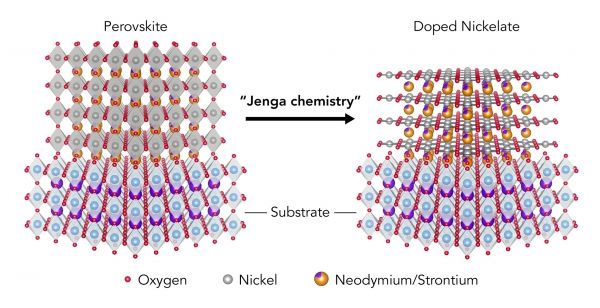Scientists at the Department of Energy’s SLAC National Accelerator Laboratory and Stanford University have made the first nickel oxide material that shows clear signs of superconductivity – the ability to transmit electrical current with no loss.
Scientists at the Department of Energy’s SLAC National Accelerator Laboratory and Stanford University have made the first nickel oxide material that shows clear signs of superconductivity – the ability to transmit electrical current with no loss.
Also known as a nickelate, it’s the first in a potential new family of unconventional superconductors that’s very similar to the copper oxides, or cuprates, whose discovery in 1986 raised hopes that superconductors could someday operate at close to room temperature and revolutionize electronic devices, power transmission and other technologies. Those similarities have scientists wondering if nickelates could also superconduct at relatively high temperatures.
At the same time, the new material seems different from the cuprates in fundamental ways – for instance, it may not contain a type of magnetism that all the superconducting cuprates have – and this could overturn leading theories of how these unconventional superconductors work. After more than three decades of research, no one has pinned that down.
Read more at Stanford University
Image: To create a new type of superconducting material, scientists at SLAC and Stanford first made a thin film of a common material known as perovskite, left; “doped” it with strontium; and then exposed it to a chemical that yanked out a layer of oxygen atoms, much like removing a stick from a tower of Jenga blocks. This made the film flip into a different atomic structure known as a nickelate, right. Tests showed that this nickelate can conduct electricity with no resistance. CREDIT: Danfeng Li/SLAC National Accelerator Laboratory and Stanford University




